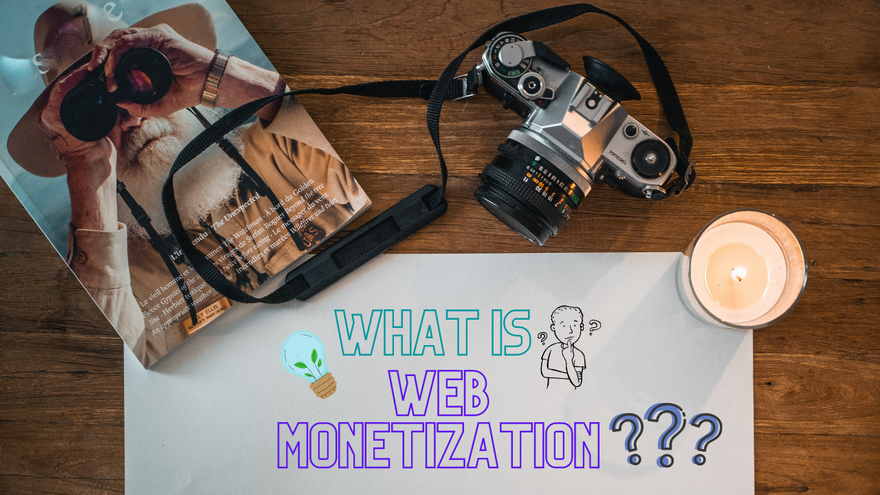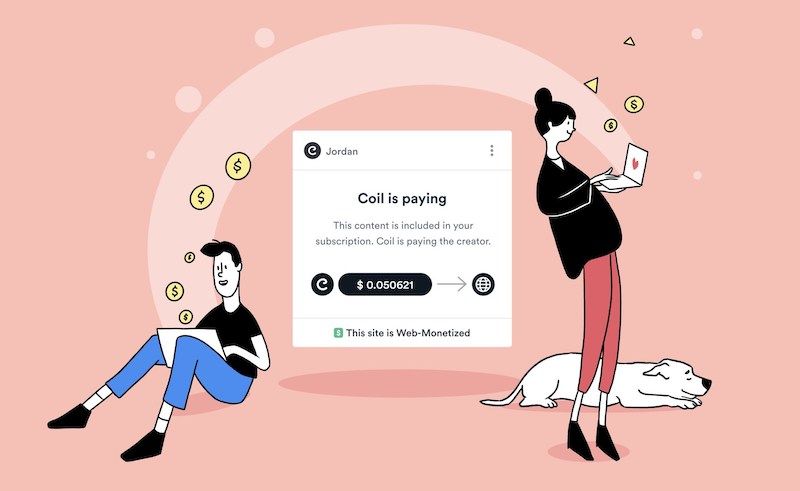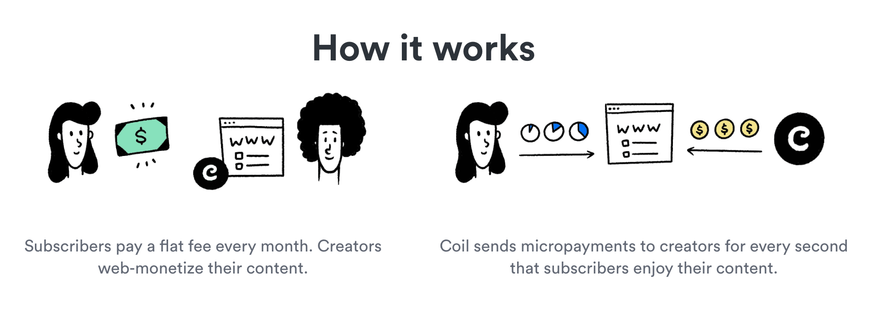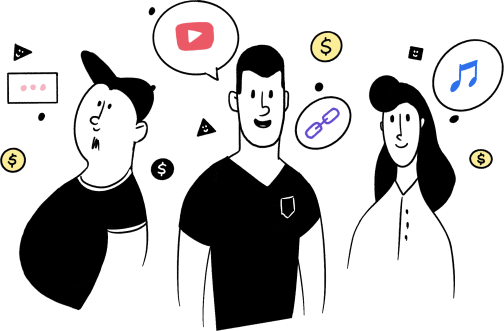Unit 1 : An Introduction to Web Monetization
Welcome to our introduction to the Web Monetization Standard, the philosophies behind it in building towards a more equitable web, the basics to how it works, the opportunities it presents, and current challenges that it faces.
So What Exactly is the Web Monetization Standard?
Glad you asked! In the words of the Artist Rescue Trust, it is a “financial fist bump made between creators and their audience.” Here is their big picture look at what Web Monetization is and how it works:
Simply put, Web Monetization is a way that content creators can earn from streaming micropayments based on the amount of time that visitors spend on their digital content.
Technically the Web Monetization Standard is a JavaScript browser API that allows for the creation of a payment stream from a website visitor to a website.
To Be Clear, the Web Monetization Standard is Not …
We know many of you have seen ‘web monetization’ used to reference things like web advertising, affiliate marketing, sponsorship, influencer marketing … etc. While these things can be utilized alongside the Web Monetization Standard, if you so choose, this is not the Web Monetization that we are discussing here or using in The Grand MozFest Web Monetization Experiment.
Image care of Veethika Mishr
*You will note that to differentiate the Web Monetization Standard from those other forms of web monetizing your digital assets, we capitalize the words ‘Web Monetization’.
The Problems That We Are Trying to Solve With the Web Monetization Standard
The Web Monetization Standard is designed to make the internet a healthier place for creators of digital resources and assets, specifically by making it a more equitable space when it comes to earning from the resources and assets that you create, by streaming payments directly and immediately into the digital wallets of the resource creators based on the time a web visitors spent on them.
This is important, because as the Internet has grown in popularity so to have the problems that it causes, especially as large companies look to see how they can profit from the Internet and organizations look to see how storytelling in the digital sphere can be utilized to shift the public consciousness. With this has come an increase in digital advertising and fake news, as Adam, the Founder of gFam articulates below.
The problems go beyond advertising and fake news though - individuals’ data is being taken advantage of for the profit and manipulation of others, and we see the formation of a classist and have and have not system on the web, where big players are profiting off of the work and creativity of others. This is particularly the case for marginalized people, who to quote Interledger and Grant for the Web’s SXSW 2022 panel pitch “too regularly have their voices muted, are eliminated from projects, and are finding that they have limited options for controlling and monetizing their art.” Too often “the web’s creative platforms and predatory ad models grant privilege and access unequally, leaving most creatives out of the very industries they helped build.”
How the Web Monetization Standard and Interledger Protocol are Addressing these Problems
In her talk below, Amber Case, highlights both the current challenges for creators of digital resources, the need for alternatives, and how Micropayments, the Web Monetization Standard and the Interledger Protocol are being experimented with to make the web more equitable for creatives.
Tune from the 15:56 - 23:21 time marker:
It should just be noted that Web Monetization does not need to be at odds with subscription models and that a membership based model is currently the main working solution for Web Monetization, as the community continues to work, problem solve, and experiment to build upon the ecosystem and ways in which to Web Monetize your work.
The Basics to How Web Monetization Works
Basically how Web Monetization currently works is through the transfer of micropayments from the Web Monetization membership of a website visitor to the Web Monetized site or digital asset that they are spending time on.
As this is a newer technology and ecosystem, Coil is at present the key Web Monetization provider, but the hope is that as the ecosystem grows there will be additional Web Monetization providers over time.
In Unit 2, we will get into how to Web Monetize your MozFest resources and assets, including setting up payment pointers. For those of you that want to dive into more now, you can visit the StoryToGo Classroom to:
- Learn how sign up for a Coil Creator Account and a Digital Wallet, and Set Up a Payment Pointer*.
- Discover how to use your Coil Membership to support Web Monetized resources and assets.
*Please note, that you do not need to set up your own digital wallets and payment pointers, if you do not wish, to Web Monetize your work. We will be sharing a variety of Internet Health and Social Good Payment Pointers that you can use, if you prefer.
Current Challenges and Opportunities
As with any newer technology and digital ecosystem, the Web Monetization is going through its early growing pains that presents both challenges and opportunities.
Growing Pains
Current challenges with the Web Monetization Standard include:
- Fear / skepticism that this must be too good to be true.
- The name - the Web Monetization Standard - simply as ‘web monetization’ was previously utilized to reference other means and modes of monetizing content on the web.
- A need for different Web Monetization providers in addition to Coil, and with that different models for utilizing Web Monetization.
- Larger base of Coil subscribers needed to make this source of funding sustainable for creators.
- Difficulties setting up digital wallets, and barriers within some countries, due to various laws and financial rules.
Image care of Florencia Viadana via UnSplash
Discovering other challenges? Let us know about them in the Forem. Someone in the community might have a fix or a work around, and if not, then if the community is aware of such challenges, then we can put our minds towards solving them.
Opportunities
Current opportunities with the Web Monetization Standard include:
- Grant for the Web is helping to build the Web Monetization ecosystem by funding new Web Monetized platforms and projects in a variety of different industries and interest areas with a diverse range of creators from around the world.
- An increasing number of Web Monetized platforms.
- Low barrier to begin, in which you can start by Web Monetizing previously created digital resources and assets.
- The Web Monetization community are finding ways to Web Monetize mainstream platforms, like YouTube and WordPress.
- Early adopter incentives on platforms.
- A wonderfully supportive community of early adopters.
What other opportunities do you see? Are there missed opportunities that you feel should be getting explored or developed, but are not. Tell us about them in the Forem, and consider pitching them in the next Grant for the Web open call for proposals.








